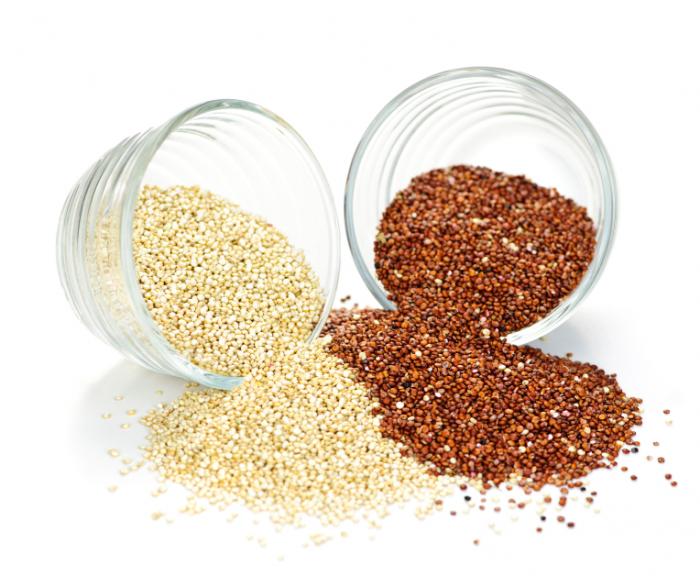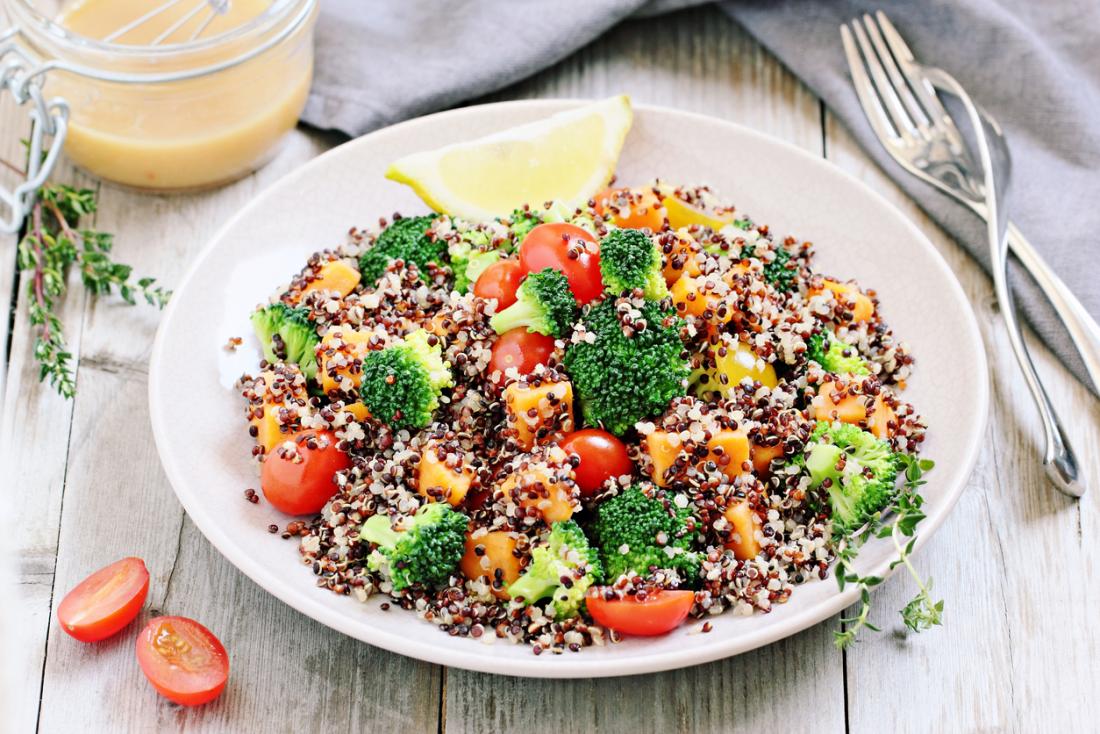Quinoa (pronounced keen-wah) and other ancient grains such as amaranth, barley and farro are rapidly growing in popularity because of their wide array of health benefits. Ancient grains are referred to as such because they have remained largely unchanged for hundreds or even thousands of years. Quinoa was known to the Incas as “the mother of all grains” and was first cultivated over 5000 years ago.
Although there are hundreds of cultivated types of quinoa, the most common versions available in stores are white, red and black quinoa.
This MNT Knowledge Center feature is part of a collection of articles on the health benefits of popular foods. It provides a nutritional breakdown of quinoa, an in-depth look at its possible health benefits and discusses way to incorporate more quinoa into your diet.
Nutritional breakdown of quinoa
Botanically, quinoa is actually not classified as a grain. It is a pseudo-cereal (a non-grassy plant used in much the same way as cereals and grains with a similar nutritional profile). The seeds of pseudo-cereals can be milled and ground into flour just as other grains and cereals.

The most common versions available in stores are white, red and black quinoa.
Nutritionally, quinoa is considered a whole grain. Whole grains include the entire intact grain seed without removing any of its parts. In contrast, when grains are milled or refined like white breads, white rice, and white pasta, they have been processed to create a finer, lighter texture. Unfortunately, most of the fiber and important nutrients are also removed during this process.
Whole grains like quinoa provide essential vitamins, minerals and fiber, which help to regulate the digestive system and to keep you fuller and more satisfied. White pastas, white rice and white breads essentially provide us with simple carbohydrates that are quickly digested but little else in the way of nutritional value.
Quinoa is naturally gluten-free and contains iron, B-vitamins, magnesium, phosphorus, potassium, calcium, vitamin E and fiber. It is one of only a few plant foods that are considered a complete protein and comprised of all pernine essential amino acids. Quinoa also has a high protein to carbohydrate ratio when compared to other grain products. It was proposed by NASA to be an ideal food for long duration space flights.
Quinoa also contains a healthy dose of fatty acids. According to Melinda Lund, M.S., R.D., a registered dietitian and medical nutrition therapist:
“about 25% of quinoa’s fatty acids come in the form of oleic acid, a heart-healthy monounsaturated fat, and about 8% comes in the form of alpha-linolenic acid (ALA), the omega-3 fatty acid most commonly found in plants.”4
One-fourth cup of dry quinoa contains 160 calories, 2.5 grams of fat (0 grams saturated and trans fat), 0 grams of cholesterol and sodium, 27 grams of carbohydrate (3 grams of fiber and 0 grams of sugar), and 6 grams of protein.
Possible health benefits of consuming quinoa
Consuming 2-3 servings of whole grain foods per day can reduce the risk of:

Incorporating quinoa into your diet could reduce the risk of cardiovascular disease, type 2 diabetes, high blood pressure, colon cancer and obesity.
- Cardiovascular disease
- Type 2 diabetes
- High blood pressure
- Colon cancer
- Obesity
Many studies have shown that as whole grain intake increases, the risk for all five of these lifestyle-related conditions decreases.
It is recommended to consume 48 grams of whole grains per day (equivalent to 3 servings of 16 g of whole grains).
Quinoa provides a higher amount of antioxidants than other common grains used in a gluten-free diet. Most gluten-free products are made up of corn, rice or potato flour are lacking in the nutrients that products incorporating quinoa can provide. Researchers at Columbia University’s Celiac Disease Center found that the nutritional content of gluten-free diets was significantly improved by adding oats or quinoa to meals and snacks (ex: protein (20.6g vs. 11g), iron (18.4mg vs. 1.4mg, calcium (182mg vs. 0mg) and fiber (12.7g vs. 5g).2
There are new studies emerging on a daily basis confirming the health benefits of adequate whole grain intake. To read more about current studies on whole grains, visit the Whole Grains Council.
How to incorporate more quinoa into your diet
Quinoa has a naturally bitter coating called saponin that keeps insects away without having to use pesticides. Saponin is easily removed by rinsing quinoa with water prior to consuming. Although most packaged quinoas have the saponin already removed, it is never a bad idea to give it an extra rinse.
It is easy to incorporate quinoa into your diet – just use it in place of rice in any recipe. Its small grains cook to tender in as little as 15 minutes. Quinoa has a subtle nutty taste that makes it a versatile ingredient in the kitchen. It can be used in baking or as a breakfast grain, as well in hot side dishes or cold salads and even in burgers.